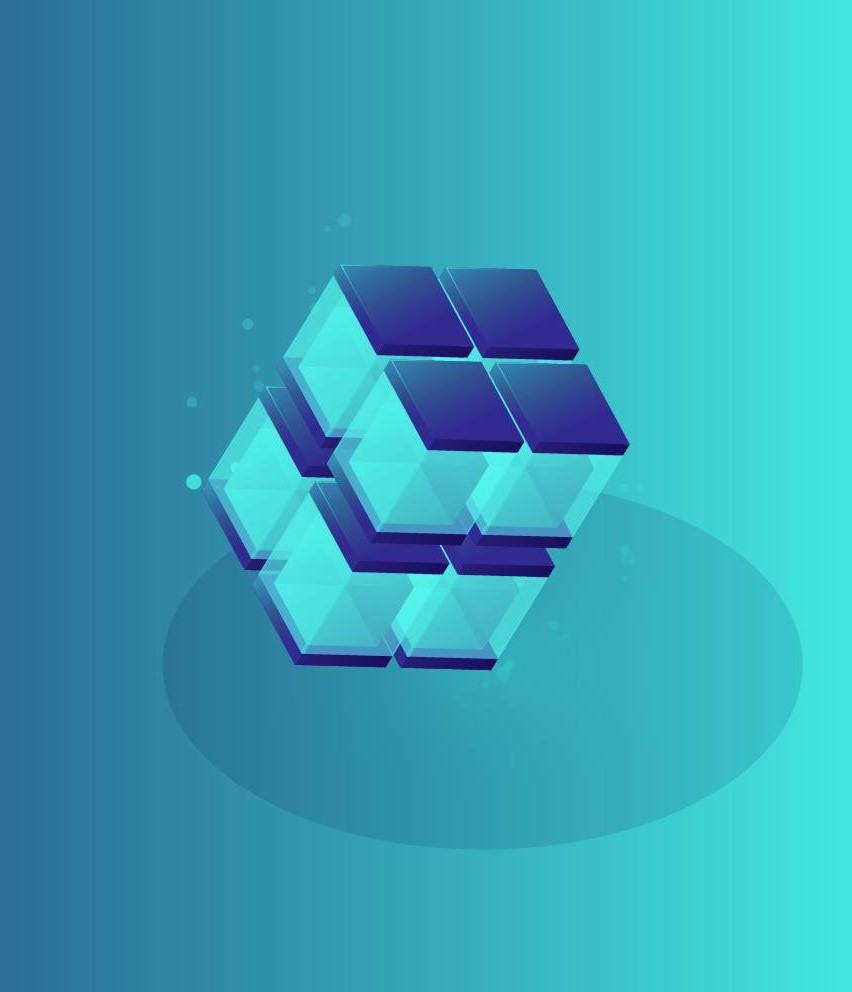
Blockchain technology evolves rapidly, increasing the demand for efficient data indexing and querying systems. Developers, analysts, and enterprises building on decentralized platforms like Ethereum focus on retrieving blockchain data efficiently and powering applications that require real-time data, without depending on traditional, centralized systems. Hosted Subgraphs offer a powerful solution to meet this growing need.
What are Hosted Subgraphs?
Hosted Subgraphs are open APIs that enable users to extract, index, and query blockchain data. They act as a bridge between blockchain data and applications. Subgraphs allow users to pull specific data, such as transactions, contracts, or events, from blockchains and transform it into a structure that can be queried efficiently using GraphQL—a query language for APIs.
In simpler terms, Hosted Subgraphs process blockchain data, making it accessible and easy to work with for developers. Instead of sifting through disorganized raw blockchain data, developers can use subgraphs to fetch the exact information they need quickly and efficiently.
Why Hosted Subgraphs Matter
Hosted Subgraphs transform how decentralized applications are built. Without subgraphs, retrieving and indexing data from blockchain nodes can be slow and resource-intensive. Hosted Subgraphs streamline data retrieval, leading to a more seamless user experience for decentralized applications.
Here are key benefits of deploying Hosted Subgraphs:
- Efficient Querying: Hosted Subgraphs enable developers to query blockchain data effectively using GraphQL, which simplifies fetching specific data without parsing entire blocks.
- Real-time Data Availability: Hosted Subgraphs index blockchain data as it’s generated, allowing dApps to display real-time information and creating a dynamic, responsive user experience.
- Interoperability: Developers can use Hosted Subgraphs across various blockchain networks, making it easier to build applications that interact with multiple chains without setting up separate data retrieval systems.
- Open Ecosystem: Hosted Subgraphs are open to everyone. Developers can create or use existing subgraphs, fostering collaboration in a vibrant ecosystem.
Creating and Deploying Hosted Subgraphs
Deploying Hosted Subgraphs involves several steps. While the process may seem technical at first, it becomes more intuitive with guidance. Below is a step-by-step explanation of how to deploy Hosted Subgraphs and prepare for their creation.
Step 1: Set Up an Account on The Graph Hosted Service
Before deploying Hosted Subgraphs, sign up for The Graph’s Hosted Service. This platform helps you manage and maintain your subgraphs.
- Visit The Graph Hosted Service.
- Create an account or sign in with your GitHub account.
- After logging in, access the dashboard, where you can create Hosted Subgraphs & manage it.
Step 2: Define Your Subgraph’s Data
Determine what data your subgraph will index and how to structure it. This step involves setting up schemas and mapping how blockchain data will be processed. Defining a subgraph shapes how your application will interact with the blockchain data.
A schema outlines the types of data your subgraph will index and how the data will relate to each other. For example, if you build a dApp to track token transfers, you might define entities like “User,” “Transfer,” and “Token.” These entities can be queried later to retrieve specific information, like users who made transfers or the number of tokens transferred over time.
Step 3: Set Up a Graph Node
Hosted Subgraphs rely on a Graph Node to interact with the blockchain. The Graph Node listens for new blocks and smart contract events, processes the data, and updates the subgraph with relevant information.
Although you don’t need to set up a Graph Node manually (The Graph’s Hosted Service manages this automatically), the Graph Node plays a critical role in the subgraph’s architecture, continuously processing real-time blockchain data.
Step 4: Define Mappings for Data Transformation
After setting up the schema, you’ll need to define mappings that transform blockchain data into the structure outlined by the schema. Mappings, written in AssemblyScript (a subset of TypeScript), describe how data from smart contracts, transaction logs, and blocks should be processed and stored.
While this post won’t cover coding mappings, it’s important to understand that mappings are crucial for ensuring that your subgraph processes and indexes data properly. By defining mappings, you ensure the blockchain data is accurate and stored in a format that supports efficient querying.
Step 5: Deploy Hosted Subgraphs
Once you’ve prepared your schema and mappings, it’s time to deploy Hosted Subgraphs.
Here’s an overview of the deployment process:
- Initialize the Subgraph: Use The Graph Hosted Service dashboard to create and initialize a new subgraph. Upload your schema and prepare your subgraph for deployment.
- Upload Mappings and Source Code: Upload the mappings and relevant source code to ensure the subgraph can properly process incoming data and store it in the format defined by the schema.
- Deploy to the Hosted Service: Submit the subgraph to The Graph’s Hosted Service. The service will index your subgraph and prepare it to handle queries.
- Test and Monitor: After deploying Hosted Subgraphs, run tests to verify that your subgraph functions as expected. The Graph provides tools to help you query and monitor your subgraph in real-time.
Step 6: Maintain and Update Your Hosted Subgraphs
After deployment, continue monitoring and maintaining your Hosted Subgraphs. As your dApp evolves or as blockchain technology advances, you may need to update or expand your subgraph to handle new data or optimize performance.
Hosted Subgraphs are flexible and can be updated as needed. Regularly review your subgraph, update schemas and mappings, and monitor performance to ensure everything runs smoothly.
Conclusion
Hosted Subgraphs play a pivotal role in decentralized application development by enabling efficient data indexing and querying from blockchains. Without subgraphs, accessing blockchain data would be cumbersome and slow, negatively impacting dApp performance.
Deploying Hosted Subgraphs involves setting up an account on The Graph’s Hosted Service, defining schemas and mappings, and submitting the subgraph for indexing. By following the steps outlined above, you can deploy Hosted Subgraphs efficiently, allowing you to build powerful, data-driven decentralized applications.
The process of deploying Hosted Subgraphs might seem complex initially, but it’s well worth the effort. As you develop expertise, you’ll see how these tools transform blockchain data into an accessible resource for your dApp. Once deployed, Hosted Subgraphs ensure faster data retrieval, enhancing the performance and scalability of your decentralized applications.
MOKRUSH Rechargeable Electric Arc Lighter for Candles, Kitchen, 360° Flexible Neck, USB Lighter, Windproof, Flameless, Diwali Fireworks
₹298.00 (as of 21 November, 2024 18:32 GMT +05:30 - More infoProduct prices and availability are accurate as of the date/time indicated and are subject to change. Any price and availability information displayed on [relevant Amazon Site(s), as applicable] at the time of purchase will apply to the purchase of this product.)2 Pcs Kitchen Mats, Waterproof Memory Foam Kitchen Rugs, Standing Desk Mat Floor Mats, Comfort Runner Rug Carpets for Kitchen Floor, Sink (c)
₹549.00 (as of 21 November, 2024 18:32 GMT +05:30 - More infoProduct prices and availability are accurate as of the date/time indicated and are subject to change. Any price and availability information displayed on [relevant Amazon Site(s), as applicable] at the time of purchase will apply to the purchase of this product.)Gas Lighter for Kitchen Use | Rechargeable Electric Lighter | Lighter | Stove & Candle Lighter with USB Charging Port | 1 Year Warranty | 600 Uses in Single Charge
₹298.00 (as of 21 November, 2024 18:32 GMT +05:30 - More infoProduct prices and availability are accurate as of the date/time indicated and are subject to change. Any price and availability information displayed on [relevant Amazon Site(s), as applicable] at the time of purchase will apply to the purchase of this product.)ATOM Digital Kitchen Food Weighing Scale For Healthy Living, Home Baking, Cooking, Fitness & Balanced Diet. | 1 Year Warranty | 10Kg x 1gms with 2 Batteries Included, SF400/A121, Color May vary
₹235.00 (as of 20 November, 2024 18:31 GMT +05:30 - More infoProduct prices and availability are accurate as of the date/time indicated and are subject to change. Any price and availability information displayed on [relevant Amazon Site(s), as applicable] at the time of purchase will apply to the purchase of this product.)RADIANT Basket Drainer & Dish Drainer Basket for Kitchen/Utensil Stand for Kitchen/Dish Drying Rack with Drainer/Bartan Stand/Dish Rack for Kitchen (Brown, Plastic)
₹269.00 (as of 21 November, 2024 18:32 GMT +05:30 - More infoProduct prices and availability are accurate as of the date/time indicated and are subject to change. Any price and availability information displayed on [relevant Amazon Site(s), as applicable] at the time of purchase will apply to the purchase of this product.)Discover more from The General Post
Subscribe to get the latest posts sent to your email.




